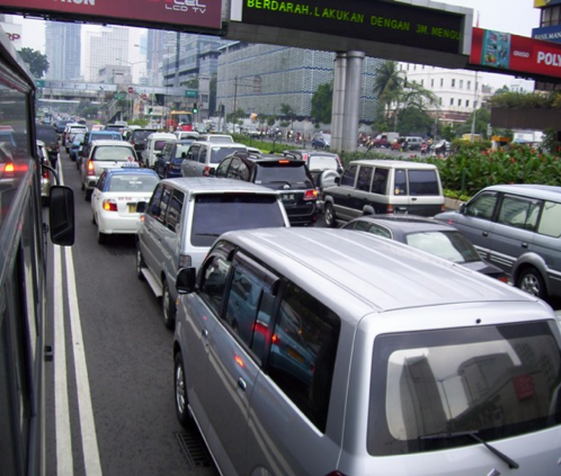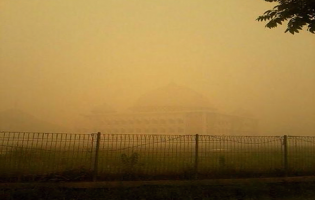Since the first World Health Assembly in Geneva on 1948 and followed by the celebration of World Health Day every 7th April, the world is still fighting to create and preserve global health. Indonesia is one of the countries that is striving to achieve a healthy environment within its borders. According to the World Health Organization, WHO, the country is ranked 115 out of 196 for the Healthy Life expectancy in the world. Young people between 16-30 years old are one of the most vulnerable groups who are facing health issues in Indonesia. One out of five Indonesian youths is subjected to health problems. Given that the number of Indonesian youths is 61.83 million, that is more than the sum of the entire population of Canada, Australia, and Singapore.
I conducted an interview with several Indonesian youth in Jakarta, Denpasar, and Semarang regarding some challenges to achieve a healthy lifestyle for the ASEAN Work-Life Balance project. I found out that the major challenge of Indonesian youth health is partly caused by air pollution especially in big cities. As the majority of youth reside in urban areas for study and job purposes, they are more likely to breathe polluted air every day. With the increasing number of citizens, population density, and vehicles in urban areas, air pollution is getting worse day by day. For example, in Jakarta, the population density is 15,174 people per km2 which is ranked as the ninth highest urban population density in the world. Along with the population density, the number of vehicles is increasing because people are less likely to use mass transportation.
In other parts such as Sumatra, Borneo, and the western part of Indonesia, young people also experience air pollution due to perennial haze problems. Every year, Indonesia has to endure a thick haze which fills cities and even provinces due to the slash-and-burn method to start a new palm oil plantation. In 2015, Indonesia was marked as a major environmental disaster in the world because of the slash-and-burn method, which led to a terrible haze in Malaysia, Singapore, the Philippines, and Thailand. It creates significant deterioration of healthy air in South East Asia. So far, there are 19 reported cases of fatality due to the haze, and approximately 500,000 people are infected by respiratory illnesses. In addition, many young people could not go to school or university because the institutions were closed and countries declared state of emergency due to the haze.

Caption: The thick haze shrouding a place of worship in Indonesia.
The air pollution (besides the haze) and the high level of traffic jam also cause health problems for young generations. According to Detik Health, people who are regularly stuck in traffic jams and breathe polluted air have a higher chance of suffering from lung disease, liver damage, cancer, and nervous system disorder. Pollution also induces mental disorders such as stress, autism and schizophrenia. One of the interviewees mentioned that she experienced being dehydrated while on the road during the dry season in Indonesia, during which temperatures can reach up to 36 degree Celsius. She also said that young people like her who get stuck in the traffic jam will be exhausted by the time they reach their school or workplace. It also causes their health condition and productivity rate to decline. Jakarta Post reported that traffic jam and air pollution in Jakarta led to a cost of Rp. 5.8 trillion just for health matters.

Caption: Traffic congestion is a common sight in Jakarta, the capital of Indonesia.
What can the youths contribute?
From my experience on doing a project and research regarding “Comprehending the Paradigm of Reproductive Health System of Impoverished Women in Bangladesh,” I realized that the young generation is more exposed to the use of technology, internet, social media, and consequently communication in different international languages. With the power of communication technology and knowledge in foreign languages, it is possible for young people world-wide to exchange knowledge regarding health issues, learn more about what worked or didn’t work in other countries, and apply what they have learnt in their own countries. One example is that as an Indonesian student, I was able to carry out a project and a secondary research regarding women’s health in Bangladesh with Bangladeshi team members, and the research paper was presented during the 2016 International Girls’ Health Writing Competition in Seoul. It is clear that the young generation has easier access to international experiences, and they can utilize communication technology to contribute knowledge about health issues.
The youths and their aptitude for technology is also a starting point to create a tele-working culture. By teleworking, youths will have more time at home because they no longer spend long hours commuting to and fro work. They can escape being stuck in traffic jams, which are detrimental for their physical and mental health. They can even have the opportunity to work with people from different countries, right from the comforts of their home. Not only will teleworking save their time and energy, it can also play a role in the preservation of good health. Also, when more people start working from home, the general public also endures fewer and less intense traffic jams.
Online campaigns work very effectively with the power of social media, which is developed, expanded and used by young people. In the case of air pollution and severe haze problems, young people can create and share infographics regarding the use of mask and prevention from greater health problems through social media. The youth can also create online multimedia campaigns such as posters, photographs, and videos to encourage people to sign petitions related to the haze problem and air pollution in Indonesia. Using social media, they can spread awareness in a cheaper and faster way to prevent further health problems and even gather donations for people who are unable to pay for their health care. Young people who work with the online platforms can create a powerful tool to reach the UN Sustainable Development Goals in health program. The power of young generations alongside advanced technology and communication thus becomes a valuable asset in creating a healthy world.
References:
WHO, “Indonesia: WHO Statistical Profile,” http://www.who.int/gho/countries/idn.pdf?ua=1
BRT – Case Study 5 – Annex 5 Case Studies and Lessons – Module 2: Bus Rapid Transit (BRT): Toolkit for Feasibility Studies. Sti-india-uttoolkit.adb.org.
Guardian, “Indonesia Forest’ Fire,” https://www.theguardian.com/sustainable-business/2015/nov/11/indonesia-forest-fires-explained-haze-palm-oil-timber-burning
Detik.com, “Hati-Hati Paparan Polusi,” http://health.detik.com/read/2015/02/16/193723/2834858/763/hati-hati-paparan-polusi-saat-macet-tingkatkan-risiko-kesehatan-serius
Jakarta Post, “Traffic jams cost Jakarta $3b annually,” http://www.thejakartapost.com/news/2011/02/10/traffic-jams-cost-jakarta-3b-annually.htm
By: Yulita Muspitasari


